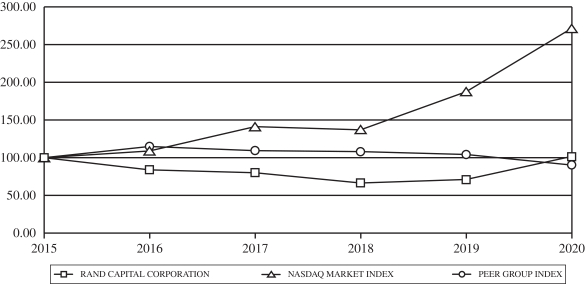Expenses decreased approximately $796,000 or 29% during the year ended
December 31, 2020 compared to the year ended December 31, 2019. The decrease in operating expenses was primarily due to an approximately $299,000 or 54% decrease in shareholders and office operating expenses. Shareholders and office
operating expenses were higher during the year ended December 31, 2019 due to the fact that we held a special meeting of shareholders to approve all proposals related to the Transaction during this period. The decrease in expense can also be
attributed to the absence of salary, bonus and benefits expense during the year ended December 31, 2020. The salary, bonus and benefit expense for the year ended December 31, 2019 was approximately $925,000. These decreases were offset by
the $504,000 increase in the base management fee payable to RCM, under the Investment Management Agreement, during the year ended December 31, 2020 compared to the year ended December 31, 2019. There were no incentive fees earned by RCM
during the year ended December 31, 2020.
Because of our intention to elect RIC status as of January 1, 2020, a net
deferred tax asset of $1,451,658 was eliminated in accordance with GAAP, resulting in deferred tax expense for the year ended December 31, 2020. In addition, certain portfolio investments, that generate
non-qualifying income for a RIC, and their related deferred tax liabilities of $247,460, were contributed to blocker corporations in December 2019. These blocker corporations will be subject to federal
and state income taxes.
Comparison of the years ended December 31, 2019 and 2018
|
|
|
|
|
|
|
|
|
|
|
|
|
|
|
|
|
| |
|
December 31,
2019 |
|
|
December 31,
2018 |
|
|
Increase |
|
|
% Increase |
|
| Total expenses |
|
$ |
2,770,716 |
|
|
$ |
2,193,672 |
|
|
$ |
577,044 |
|
|
|
26.3 |
% |
The increase in expenses during the year ended December 31, 2019 versus the same period in 2018 was
primarily caused by the additional shareholder and professional fees required to close the Transaction in November 2019. Shareholder expense was $557,546 and $230,050 for the years ended December 31, 2019 and 2018, respectively, a 142%
increase. Professional fees were $548,041 and $407,159 for the years ended December 31, 2019 and 2018, respectively, a 35% increase.
Base management fees payable to RCM, under the Prior Investment Management Agreement, for the year ended December 31, 2019 was $85,483. This represents base management fees for the period
November 8, 2019 through December 31, 2019. There were no base management fees earned for the year ended December 31, 2018. There were no incentive fees earned, under the Prior Investment Management Agreement, for the years ended
December 31, 2019 or 2018, respectively, by RCM.
Net Realized Gains and Losses on Investments
|
|
|
|
|
|
|
|
|
|
|
|
|
| |
|
December 31,
2020 |
|
|
December 31,
2019 |
|
|
December 31,
2018 |
|
| Net realized (loss) gain on sales and dispositions, before income taxes |
|
($ |
5,983,279 |
) |
|
$ |
1,117,761 |
|
|
($ |
1,464,142 |
) |
During year ended December 31, 2020, we realized a $2.3 million gain when we exited our
investment in Outmatch as part of a strategic majority investment from Rubicon Technology Partners. We also received additional proceeds of approximately $117,000 from Microcision LLC (Microcision) related to the 2019 sale of our equity interest in
Microcision and approximately $37,000 in additional gain from Advantage 24/7. We recognized a realized loss of $5.1 million on Genicon, Inc. following its senior creditor liquidation. In addition, we recognized a $1.6 million loss in
Teleservices Solutions Holdings, LLC, a $0.9 million loss in BeetNPath, LLC, a $0.4 million loss in G-TEC Natural Gas Systems, and a $0.3 million loss in Dataview, Inc. following the sale and/or
liquidation of the investment securities.
During the year ended December 31, 2019, we sold our equity interest in
Microcision LLC (Microcision) and recognized a gain of $1,510,000. In addition, we realized a loss of $472,632 on our investment in SOMS Technologies, LLC after the company ceased doing business. We also recognized a $40,500 gain on our investment
in Advantage 24/7 LLC after the Corporation converted its equity into a debt instrument, and we received a final distribution of proceeds of $39,893 from Gemcor II, LLC, a portfolio company we exited in 2016.
45
